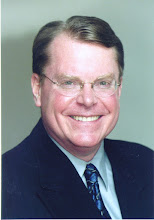A recent Federal study makes perfectly clear the massive subsidies baked into our public and private insurance systems resulting from an inescapable fact: demographics.
Most people know this stuff, but it's good to be reminded (I found it interesting, anyway).
The Agency For Healthcare Research And Quality got some headlines recently regarding its review of national health care expenditures distributed by demographic group (if you's like the whole thing, go here:http://meps.ahrq.gov/mepsweb/data_files/publications/st354/stat354.shtml). The major findings:
---In 2009, the top one percent of those utilizing health care services consumed nearly 22% of the value of health care services (20.2%) in 2008, for a mean expenditure of $90,061;
---In 2008 and 2009, the top five percent of utilizers consumed 49% of the value of services, with mean expenditures of $35,829;
---The top 10 percent of utilizers incurred 63.6% of costs in 2008, and;
---The bottom FIFTY PERCENT of utilizers incurred about THREE PERCENT of expenditures in the same period.
---The people most likely to be in the top ten percent are over 45, and covered by some form of public or private insurance. And once you're in, there's nearly a 50% chance you'll be a top ten percenter for a long time...nearly a 60% chance if you're a woman.
These findings are relatively consistent with research conducted annually since 2002. So the distribution is pretty constant. If you're interested in more detail and subtlety than I'm capable of here, you should look at the whole briefing.
The thing I find interesting is that the curve hasn't changed much for as long as I can remember.
And the data suggest that, for all the talk about consumer education and empowerment, incentives, wellness, whatever...No matter what we do, about ten percent of our population are going to consume over sixty percent of our health care dollars. Most of them will be older. And those old folks are going to be in the queue for a long time. AND those in the top ten percent are receiving a massive subsidy from the vast majority of health plan participants who are younger and healthier.
I don't use the term "subsidy" as conservative screed. It's a fact of demographics.
The old, sick folks who are receiving significant services today (and, really, at a mean expenditure of $90,000, the number IS significant, but not outrageous) were once, and for a long time, among the younger and healthier cohort. For a generation or more, they were the susidizers. Now they're the subsidized.
At a macro level, this all makes perfect sense. It's perfectly reflective of the notion of shared risk which is (or used to be, at least) the essence of group health coverage.
But I wonder what the implications are for the uninsured population (I think we're back to 47 million). About 6 million dependent kids got absorbed into the system thanks to SCHIP expansions and the new federal mandate on group health plans for kids under 26. About a third of the uninsured are uninsured for 60 days or less; they're in transition. Supposedly about a third are "young invincibles," who don't buy coverage because they consider it expensive or unnecessary.
But the remaining third are problematic. I suspect that a disproportionate share of the remaining population are people with enough health problems that they're either extremely expensive or impossible to insure. With a mean expenditure among the top 5% of users is $35,000, you probably don't need to be THAT sick to qualify for the top ten percent.
It will take more than 20 invincibles paying $350 per month in premiums, and using nothing, to subsidize one member of the top one percent. Even with a mandate, is there that big a group out there?...The numbers don't make sense to me.
Subscribe to:
Post Comments (Atom)

No comments:
Post a Comment